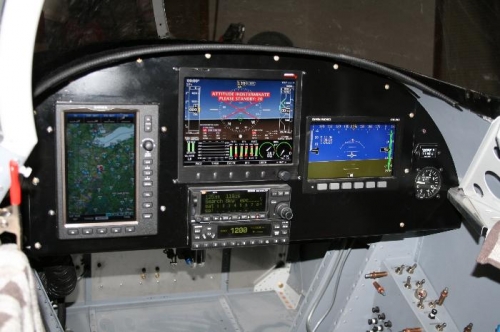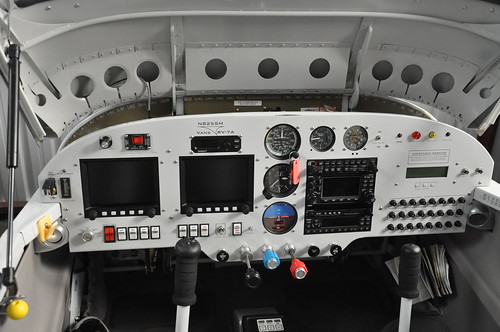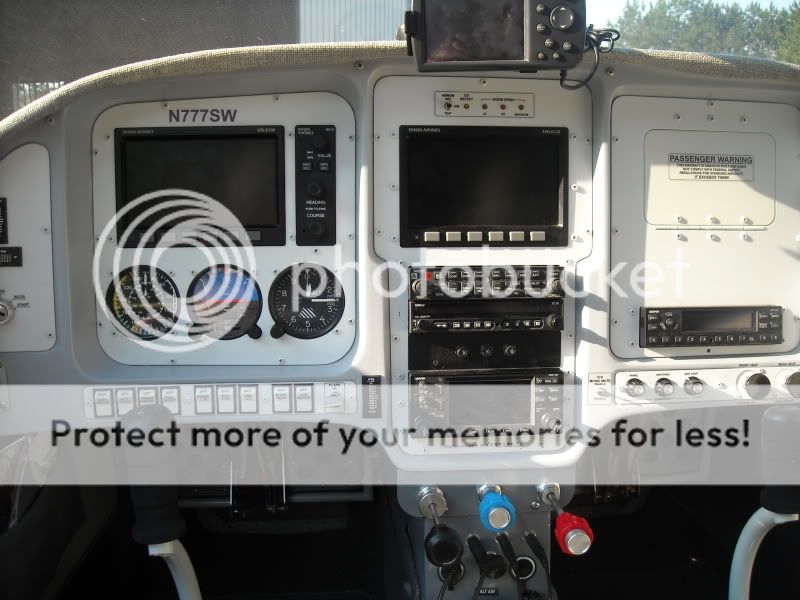When I built my plane I installed a Dynon D100 EFIS and D10 EMS.
I never worried about a backup for the D10 Engine Monitor because if it went dark and the engine continued to run, I figured I could land and work that out.
For the EFIS I installed an Airspeed Indicator, Altimeter, slip ball, and compass.
The airplane never flew with the compass and Doug now has it to install in his -3. The slip ball was removed when I added Dynon?s AP74 Autopilot head.
I?m not about to replace the Dynon EFIS and EMS with a SkyView and will probably leave off the steam gauges.
The reason is that I can land the plane without an airspeed indicator (I?ve done this a number of times while trying to sort out a pitot system leak). Also, I?m leaving in my Garmin 496 so I will have the ability to navigate and know my altitude in the event of an electrical / SkyView failure.
Remember, to have true redundancy, you will need a second, independent, pitot tube and static system.
PS. Using the GPS for an airspeed reference is of limited use, you must still ?feel? how the plane is flying.









